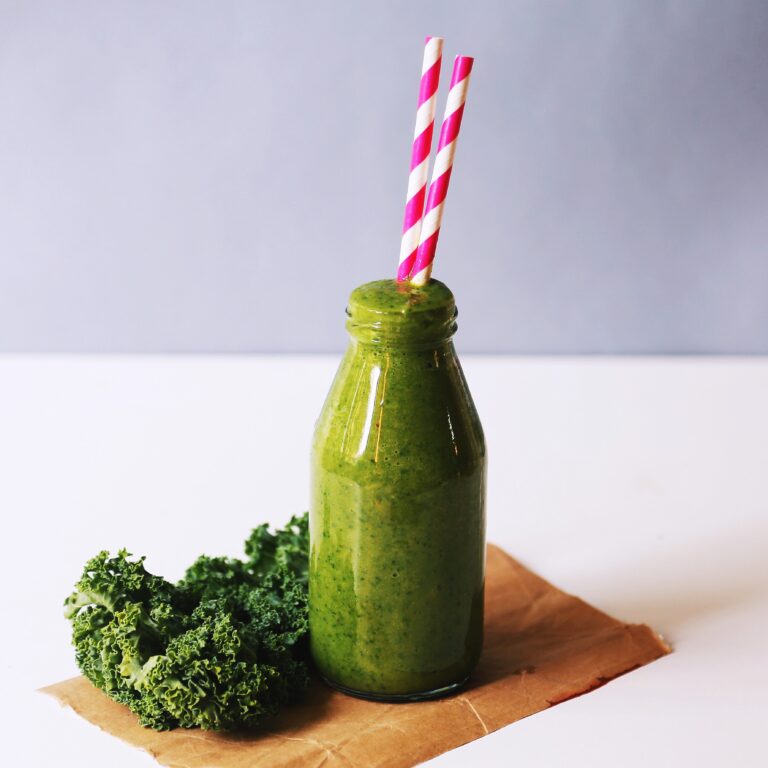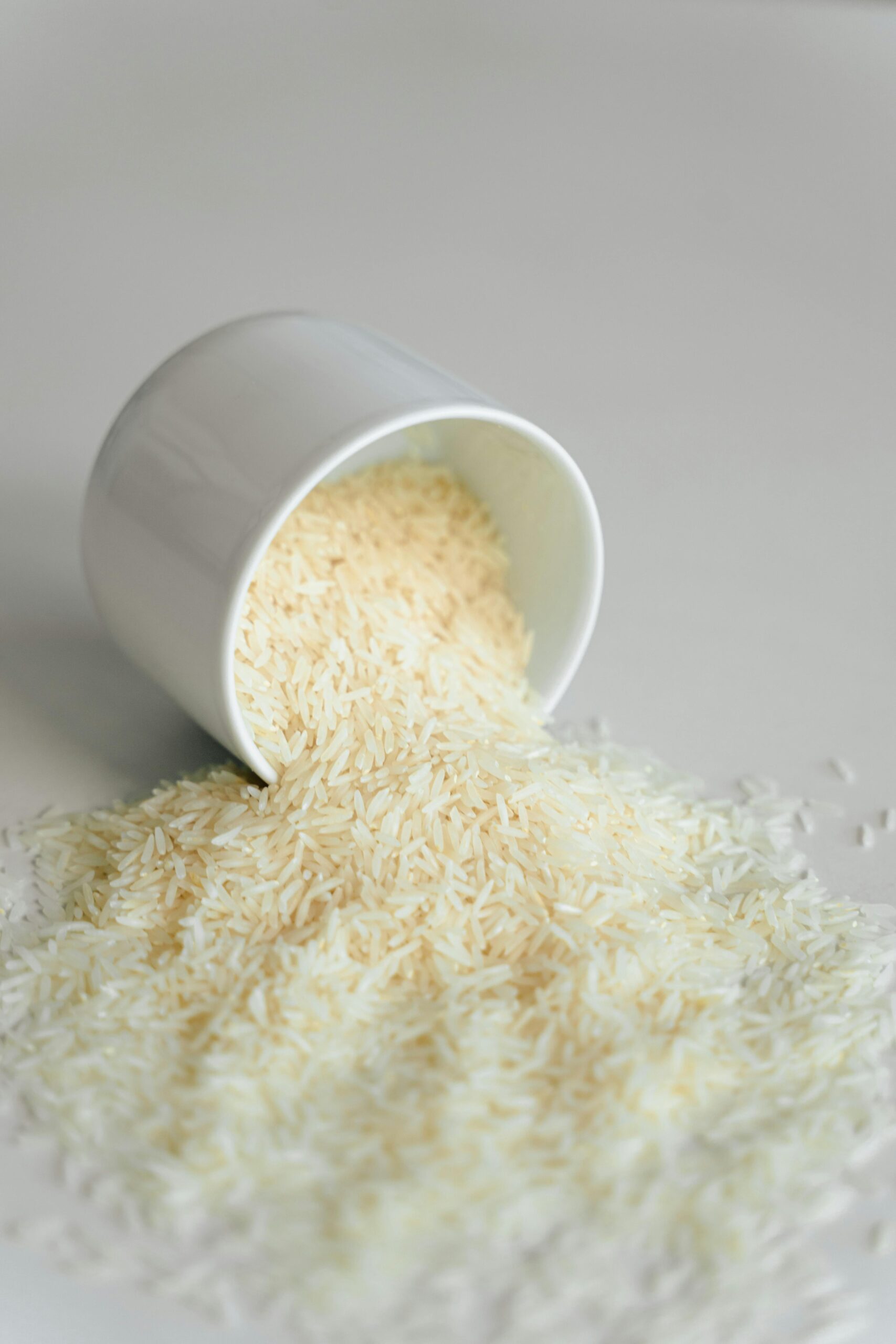
When it comes to selecting the perfect rice variety for a balanced diet, the aromatic Basmati rice often comes to mind. Hailing predominantly from the Indian subcontinent, particularly the Himalayan region of Himachal Pradesh, this type of long-grain rice is not just a staple food in Asian countries but is also adored globally for its unique nutty flavor and fluffy texture. Well, the good news is, we’re about to serve up all the deets on this variety of rice, so you can decide if it’s the right grain for your gains.
What Is Basmati Rice
Basmati rice is a variety of long-grain rice that is known for its distinctive aromatic fragrance and nutty flavor. It originates from the Indian subcontinent, particularly the Himalayan foothills. Basmati rice grains are longer than typical rice grains and become even fluffier and less sticky than other types of rice when cooked. It comes in two main varieties: white and brown, with brown basmati rice retaining more nutrients due to the presence of the bran and germ. Basmati rice is a popular choice in Indian and Pakistani cuisine and is often used in dishes like biryani, pilaf, and as an accompaniment to curries.
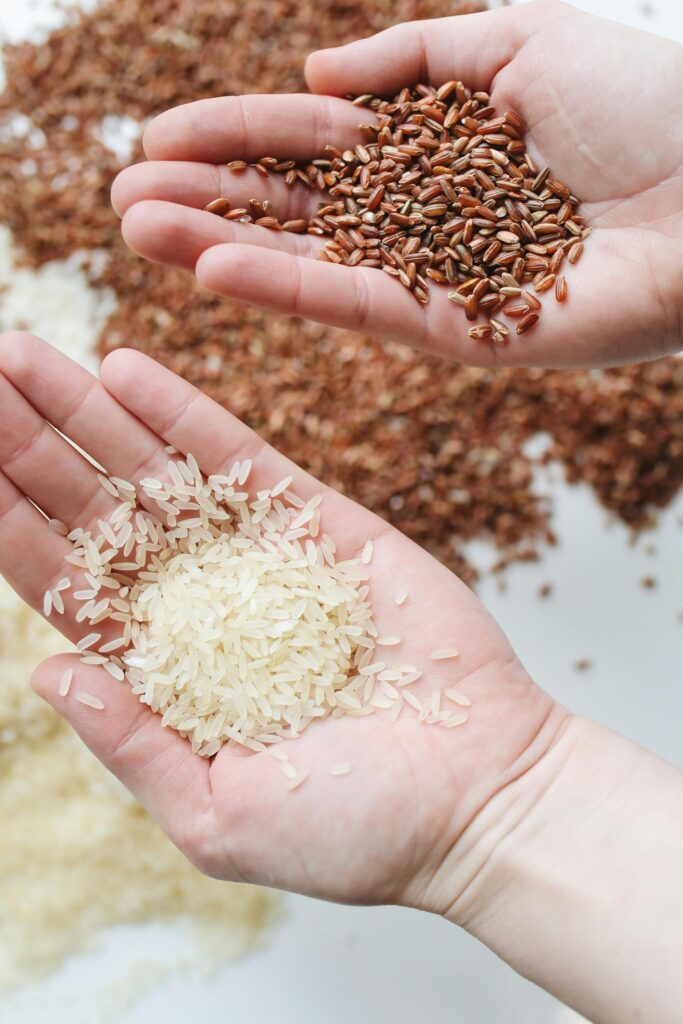
Brown Basmati Rice vs. White Basmati Rice
While there are numerous varieties of rice, the brown and white versions of Basmati rice stand out for their health benefits.
Whole Grain Basmati Rice, also known as Brown Rice
Brown Basmati rice is a whole grain, which means it retains the bran and germ, offering more in terms of nutritional value, including higher dietary fiber, essential amino acids, and B vitamins such as folic acid and vitamin B. This variety of rice is particularly beneficial for blood sugar control due to its lower glycemic index, which helps prevent sudden spikes in blood sugar levels. Moreover, the presence of phytic acid, though often seen as an anti-nutrient, can also contribute to overall health by promoting good digestive health.
White Basmati Rice
On the other hand, white Basmati rice, a type of rice that has been milled to remove the bran and germ, has a higher glycemic index and fewer calories. It may contribute to a higher risk of type 2 diabetes and weight gain if consumed in large quantities. However, it is still a better choice over regular white rice due to its resistant starch content, which can benefit insulin sensitivity and digestive health.
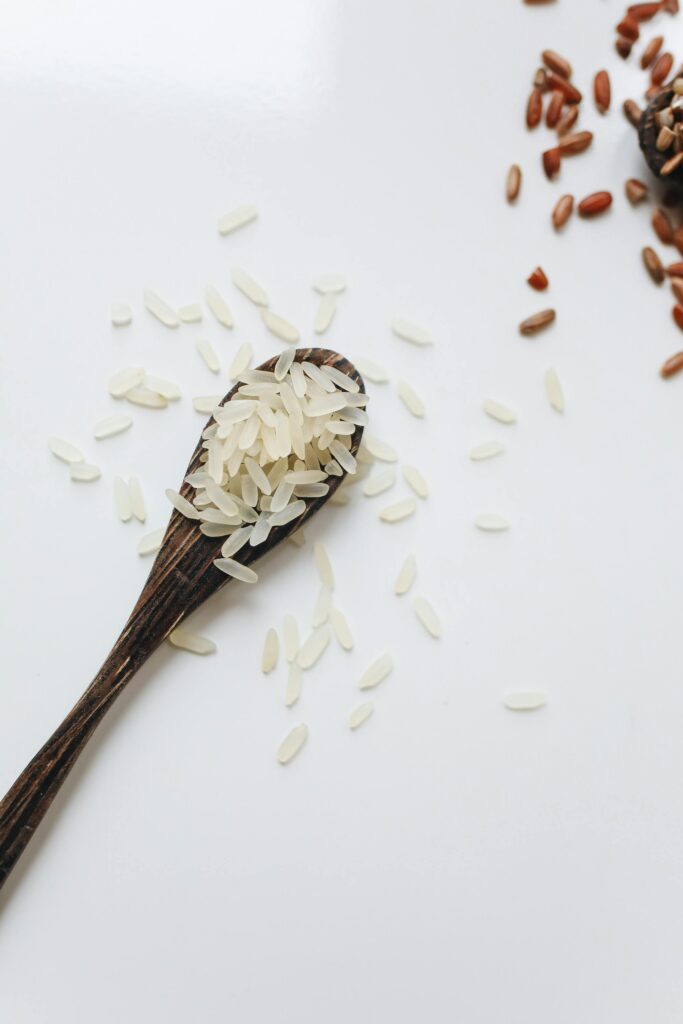
Basmati Rice Nutrition Facts
Basmati rice, particularly in its whole grain form, is a nutritious staple that offers various health benefits. A typical 1-cup serving of cooked basmati rice provides about 210 calories, 45 grams of carbohydrates, 4 grams of protein, and less than 1 gram of fat. It contains minimal amounts of fiber, with white basmati rice having less than 1 gram and brown basmati rice offering around 3 grams per cup.
Other Basmati Rice Basic Nutrition Facts
Basmati rice is also a good source of essential vitamins and minerals, including B vitamins like niacin and thiamine, as well as minerals like iron and manganese. Brown basmati rice, with its whole grains, has a higher content of nutrients, dietary fiber, and a lower glycemic index compared to white basmati rice, making it a healthier choice for maintaining steady blood sugar levels.
Health Benefits of Basmati Rice
1. Lowers Risk of Heart Disease
Brown varieties of Basmati rice contain essential nutrients that can help maintain healthy blood vessels, reducing the risk of heart disease. The fiber content is particularly good for the heart as it can lower cholesterol levels and maintain blood pressure, thus reducing the risk of high blood pressure and subsequent heart problems.
2. Aids in Weight Management
For those concerned about weight management, brown Basmati rice can be a great addition to your diet. The high fiber content keeps you full for a long time, helping to control appetite and potentially aiding in weight management. Moreover, the chewy texture and rich flavor of Basmati rice can make a satisfying meal with fewer calories, making it a better option over other rice varieties.
3. Supports Blood Sugar Control
Both brown and white Basmati rice have a low to medium glycemic index, making them a good choice for blood sugar control compared to high glycemic index options like white rice consumption. This is particularly important for individuals with diabetes or those at risk of developing diabetes.
4. Rich in Essential Vitamins and Minerals
Basmati rice is a rich source of essential vitamins and minerals. It includes vitamins such as vitamin E and minerals like magnesium and potassium. These following nutrients are vital for maintaining good health, from brain health to the nervous system and immune system.
5. Good for Digestive Health
The dietary fiber in brown Basmati rice helps in maintaining a healthy digestive tract and improves digestive health. This can be especially beneficial for individuals with conditions like celiac disease or those who are making dietary choices that focus on gut health.
6. Enhances Brain Health
The B vitamins in brown Basmati rice, particularly vitamin B6, are crucial for brain health and the proper functioning of the nervous system. They aid in neurotransmitter synthesis, which can affect mood and cognitive functions.
7. Suitable for a Variety of Diets
Basmati rice, especially the brown varieties, can be a good option for people with celiac disease or those on a gluten-free diet since it can be ground into rice flour. Additionally, the essential amino acids present in this rice variety make it an excellent choice for vegans and vegetarians looking for a good protein source.
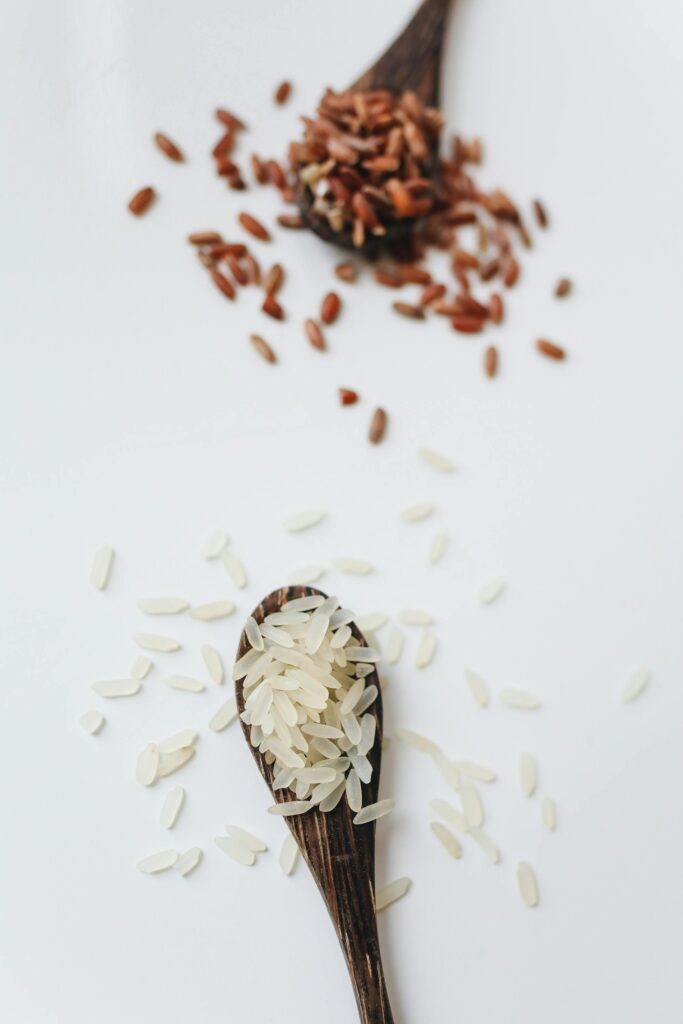
Is Basmati Rice Always the Healthier Option?
While Basmati rice has many health benefits, it’s important to note that no single food should be the sole focus of a healthy diet. A better choice is to include a variety of grains, such as wild rice, black rice, and jasmine rice, all of which have their unique nutritional profiles and health benefits. For instance, black rice is rich in antioxidants, and wild rice is known for its high protein content and low calorie count.
Downsides of Basmati Rice
While basmati rice has several health benefits, there are some downsides to consider:
- Arsenic Content: Basmati rice, like all rice types, can contain arsenic, a heavy metal that can contribute to health problems over time if consumed in large quantities. Brown basmati rice may have slightly higher levels because arsenic is predominantly found in the bran.
- Glycemic Index: Even though basmati rice has a lower glycemic index compared to other types of white rice, it can still cause blood sugar levels to rise, which can be a concern for individuals with diabetes or those trying to manage their blood sugar levels.
- Caloric Density: Rice is a calorie-dense food, which means it can contribute to weight gain if consumed in large portions, especially when combined with rich sauces or fried foods.
- Nutrient Disparity: White basmati rice, due to its processing, lacks the fiber, vitamins, and minerals found in its brown rice counterpart or other whole grains, which are essential for a balanced diet.
- Digestibility: Some people may find white rice easier to digest than brown rice because of the lower fiber content. Conversely, brown rice may cause digestive issues for some due to its high fiber content.
- Cost: Basmati rice can be more expensive than other rice varieties, which may be a consideration for those on a budget.
- Limited Nutritional Range: Relying solely on rice as a staple can lead to a lack of nutritional variety. It’s important to include a diverse range of foods in your diet to ensure you’re getting all necessary nutrients.
In conclusion, while basmati rice can be a healthy part of a diet, it’s important to consume it in moderation, be mindful of portion sizes, and balance it with other nutrient-rich foods to maintain overall health.
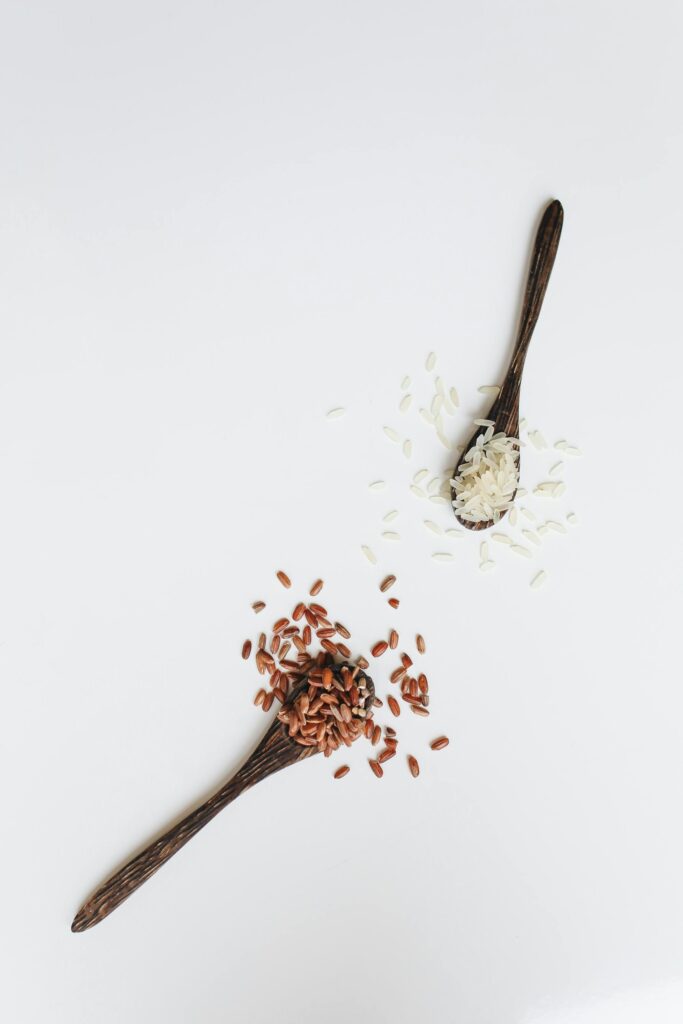
How to Prepare Basmati Rice
To prepare basmati rice, start by rinsing the rice in cold water until the water runs clear to remove excess starch. Then, soak the rice for 20-30 minutes to achieve a fluffier texture after cooking. For cooking, use a 1:1.5 ratio of rice to water (1 cup of rice to 1.5 cups of water). Bring the water to a boil, add the rice, stir, and then reduce the heat to low. Cover the pot and let the rice simmer for about 15-20 minutes, or until the water is absorbed and the rice is tender. Remove from heat and let it sit, covered, for 5 minutes to allow the rice to steam. Fluff with a fork before serving to separate the grains.
Suggested: Can You Freeze Cooked Rice?
Basmati Rice Recipes To Try
Here are a few basmati rice recipes that showcase its versatility in cooking:
- Classic Basmati Rice Pilaf:
- Sauté finely chopped onions, garlic, and carrots in a pot with olive oil.
- Stir in a cup of basmati rice until the grains are well-coated with the oil.
- Pour in two cups of chicken or vegetable broth and bring to a boil.
- Reduce heat, cover, and simmer for 20 minutes.
- Fluff with a fork and garnish with fresh parsley before serving.
- Vegetable Fried Basmati Rice:
- Stir-fry a mixture of vegetables like bell peppers, peas, and carrots in sesame oil.
- Push the vegetables to the side of the pan and scramble an egg in the center.
- Add cooked basmati rice, soy sauce, and green onions, and stir-fry everything together.
- Coconut Basmati Rice:
- Start by cooking basmati rice in a mixture of water and coconut milk.
- Add a pinch of salt and a bit of sugar to enhance the coconut flavor.
- Once cooked, stir in toasted shredded coconut and serve with a curry or grilled seafood.
Other Recipes to Try
Each recipe brings out the unique qualities of basmati rice and can be adapted to fit brown basmati rice for a whole-grain, healthier option. Enjoy experimenting with these dishes and the aromatic flavors they offer.

Basmati Rice FAQs
Is Basmati Rice Good for Weight Loss
Basmati rice can be a part of a weight loss diet if consumed in moderation. The brown variety of basmati rice is particularly beneficial due to its higher fiber content, which can help you feel full longer and may aid in controlling appetite. Its lower glycemic index compared to white rice also helps prevent blood sugar spikes, contributing to better satiety and less fat storage. However, portion control is key, as rice is calorie-dense, and excessive consumption can lead to weight gain.
Is Basmati Rice Similar to White Rice
Basmati rice is a variety of long-grain rice that falls under the category of white rice when it’s had its husk, bran, and germ removed. It shares similarities with other types of white rice, like having a similar calorie content and a mild flavor. However, basmati rice is distinct in its aromatic fragrance, nutty taste, and elongated grains that become fluffy and do not stick together after cooking.
Nutritionally, white basmati rice has a slightly lower glycemic index than some other forms of white rice, making it a slightly better option for blood sugar control.
Is White Basmati Rice Heart Healthy
White basmati rice, when eaten in moderation, can be part of a heart-healthy diet, especially when compared to other varieties of white rice due to its lower glycemic index, which may have a more favorable effect on blood sugar levels. However, brown basmati rice is a better choice as it retains its whole grains, providing more fiber, which can help lower cholesterol levels and reduce the risk of heart disease. For optimal heart health, it’s important to balance rice consumption with a diet rich in fruits, vegetables, lean proteins, and whole grains.
Other Helpful Ingredient Guides
- Benefits of Kale Juice
- Benefits of Cucumbers
- Benefits of Carrots
- Benefits of Strawberry Juice
- Benefits of Dates
- Benefits of Eating Papaya Seeds at Night
Final Thoughts
Incorporating Basmati rice, particularly the brown and aromatic rice varieties, into a balanced diet can be a healthier option over other types of rice due to its lower glycemic index, essential nutrients, and ability to support weight management and blood sugar levels.
Whether enjoyed in Indian cuisine, as a side dish to Middle Eastern meals, or simply as part of a nutritious meal with vegetables and lean protein, Basmati rice can contribute to good health and be a valuable part of your dietary choices. Remember, moderation is key, and combining this wonderful grain with other healthful foods can make for a wholesome and delicious dietary pattern.

Christopher is a food and lifestyle expert, recipe developer and the content creator behind May Eighty Five. With years of experience in the kitchen, he also shares tips, tricks and how to’s that he has learnt over the years. Every week, he shares quick, simple and mostly healthy recipes along with some home and entertaining tips. You will find flavorful cocktails, delicious appetizers, tasty mains and some indulgent desserts. As a home decor enthusiast, he also likes to share simple DIY projects and simple tips for a beautiful home.







